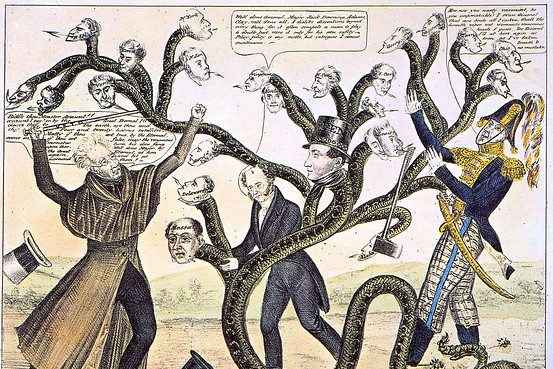| Want to send this page or a link to a friend? Click on mail at the top of this window. |
| More Books and Arts |
| Posted October 16, 2008 |
| A Short Banking History |
| of the United States |
 |
| THE GRANGER COLLECTION |
| President Andrew Jackson destroying the Bank of the United. Lithograph, 1928. |
| By JOHN STEELE GORDON |
| Wehaitians.com, the scholarly journal of democracy and human rights |
| More from wehaitians.com |